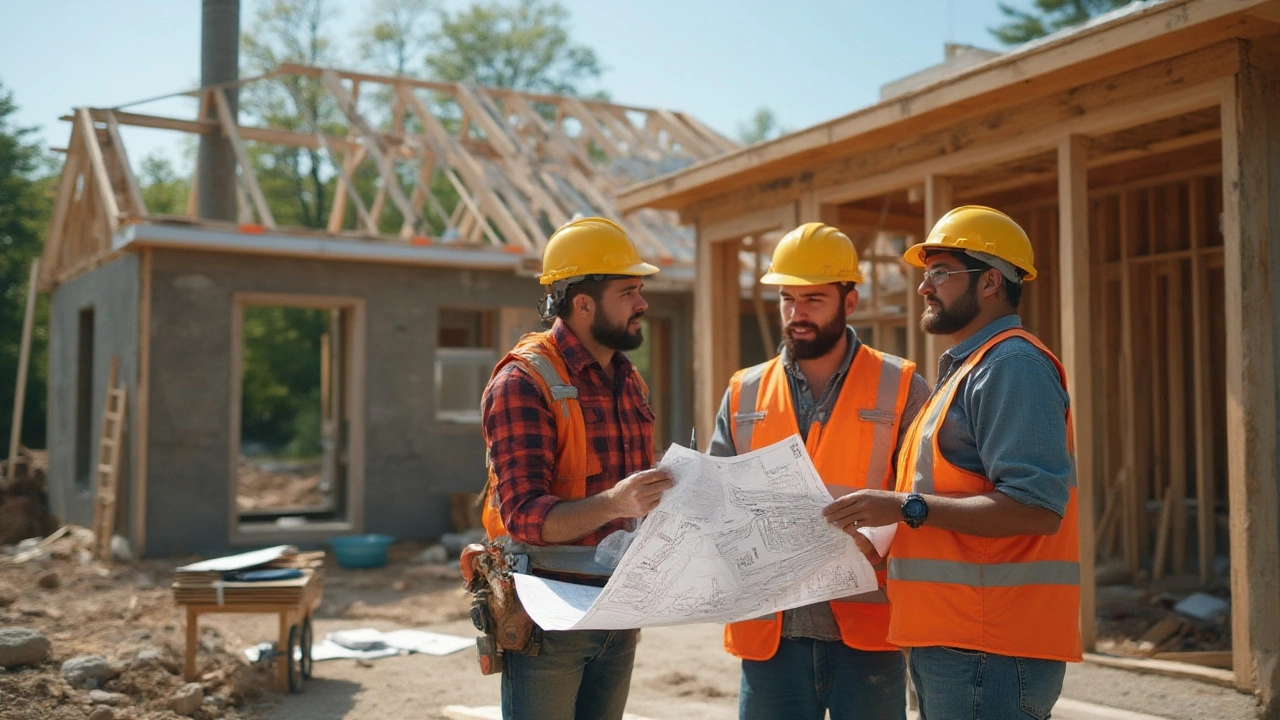Thinking about building a house this year? You’re not alone. 2025 brings fresh tech, greener materials, and smarter design plans that make construction easier and more affordable. Below you’ll find the biggest trends, budget hacks, and practical steps to turn your vision into a finished home.
First up, sustainability is no longer a buzzword—it’s the baseline. Most builders now use low‑carbon concrete, recycled steel, and engineered wood that look great and cut emissions. If you choose these materials, you’ll often qualify for tax breaks or local incentives.
Second, modular and prefabricated homes are booming. Factories cut waste, keep quality consistent, and assemble sections on‑site in days, not months. A modular build can shave 20‑30% off your timeline and often lowers labor costs.
Third, smart‑home integration is built‑in, not an afterthought. Wiring for Wi‑Fi‑enabled thermostats, security cameras, and voice‑controlled lighting comes standard in most 2025 floor plans. This saves you retrofitting later and boosts resale value.
Start with a clear, realistic budget. Break it down into land, design, permits, core construction, finishes, and a contingency buffer—usually 10‑15% of the total. Having numbers for each bucket helps avoid surprise costs.
Next, get multiple quotes for every major trade. Even small differences in labor rates add up. Ask for a detailed breakdown so you can compare apples to apples.
Consider a phased build. Finish the shell and essential rooms first, then add luxury finishes like marble countertops or high‑end fixtures later. This spreads expenses over time and lets you move in sooner.
Don’t forget to explore financing options geared toward new builds. Some banks offer lower rates for energy‑efficient projects or for homes that meet certain green certifications.
Finally, DIY where you can. Painting, landscaping, or installing basic fixtures are tasks many homeowners tackle without professional help, saving a few thousand dollars.
1. Pick the right lot. Look for locations with good utilities, easy road access, and zoning that matches your design. Proximity to schools, work, and amenities also affects future resale.
2. Hire an architect who knows 2025 trends. Share your budget and style preferences early. A good architect can suggest cost‑cutting layouts, like open‑plan designs that use fewer interior walls.
3. Secure permits. This can be the most time‑consuming part. Work with a local contractor who knows the paperwork to keep things moving.
4. Choose a builder. Look for experience with modular or sustainable projects. Check references and ask to see completed homes.
5. Finalize materials. Opt for recycled or locally sourced options when possible. They often cost less and reduce transport emissions.
6. Monitor progress. Visit the site weekly, ask for updates, and address issues quickly. Early fixes prevent costly delays later.
7. Plan for the finish. Select fixtures, colors, and smart‑home devices while the structure is up. Ordering early avoids last‑minute surcharges.
Building a house in 2025 is more accessible than ever, thanks to greener materials, modular tech, and integrated smart systems. Keep an eye on trends, stick to a solid budget, and follow a clear step‑by‑step plan. Before you know it, you’ll be holding the keys to a home that’s modern, efficient, and truly yours.

Curious about the true cost to build a 3,000 sq ft home in Tennessee in 2025? Dig into real numbers, insider tips, and expert budget breakdowns for your dream home.